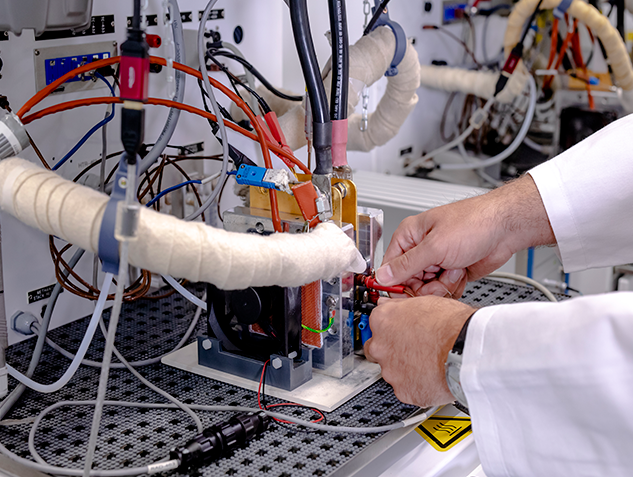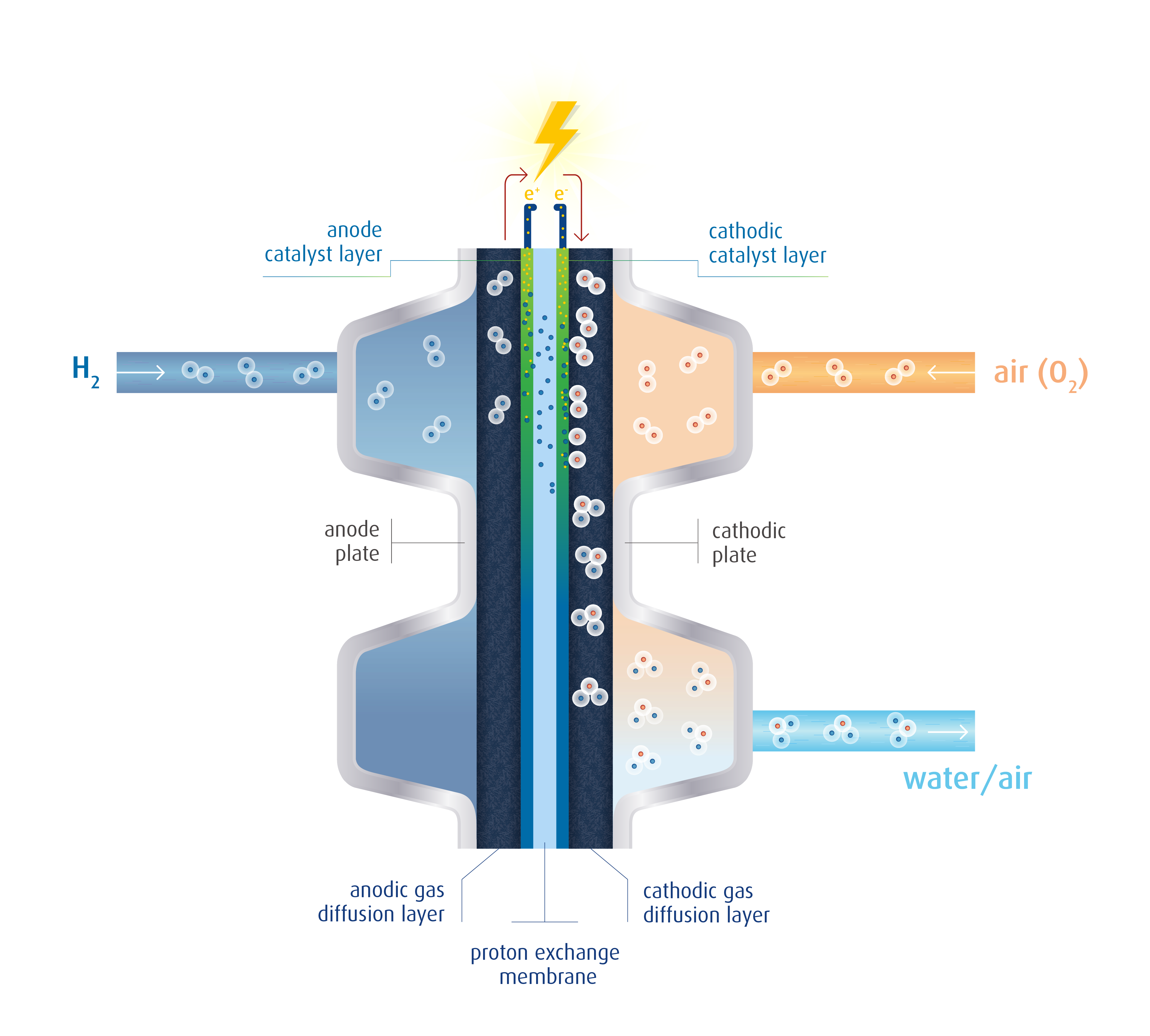Fuel Cells: zero emissions and long driving range
The application of platinum as a catalyst to generate electric power through the conversion of hydrogen with air, also known as fuel cell technology, is more than 100 years old. However, the application has only recently gained importance as an environmentally friendly alternative to combustion engines in drivetrain applications as the challenges of climate change and the availability of clean energy solutions have given traction to fuel cell drivetrains. They combine all the environmental advantages of battery-powered electric vehicles and the driving range and refueling time of today’s internal combustion engines.
How do fuel cells work?
- Fuel cells generate electricity using hydrogen as the energy carrier.
- Hydrogen reacts with oxygen, creating electricity.
- The catalyst materials set this chemical reaction in motion.
Fuel cell technology at Umicore
Umicore has been developing fuel cell catalysts for 30 years and provides platinum and iridium catalysts for a range of PEM fuel cells. As a supplier of such materials/catalysts (both Anode and Cathode catalysts), Umicore has developed efficient solutions that revolutionize the way we travel.
Electricity is generated directly from the reaction between hydrogen and oxygen and can be used very efficiently. The beauty of the fuel cell system is, that the hydrogen is a high energy carrier while the electric energy is clean.
Fuel cell technology has had a number of ups and downs, but the technology is reaching maturity today. Umicore has a competitive product portfolio with a strong R&D pipeline and is very well positioned; our products are on the road today and are present in most of the development platforms of the biggest OEMs.
Best of both worlds
Fuel cell drivetrains provide the best of both worlds: not only superior range and better refueling time, like an internal combustion engine vehicle, but also zero emissions like a battery-operated electrical vehicle.
Driving a car requires power, while a longer driving range requires energy density. With a battery it is difficult to combine power and range, due to constraints in current technology. Fuel cells combine both power and range. This is perfect for long-haul trucking and long-distance transportation. For passenger cars less power is needed, but a long driving range can be important.
Some drawbacks still need to be overcome. One is cost. The use of platinum should be reduced by catalyst and system engineering. Another one is economy of scale, especially for the automotive industry to make fuel cell cars cheaper. The biggest drawback however, may be the need for infrastructure programs. Hydrogen needs to be available and accessible for refill, through transport - by pipeline or trucks - or on-site production. Accurate infrastructure will require huge investments.

Fuel cells today and tomorrow
The demand for fuel cells is already present with a number of players already putting fuel-cell vehicles on the road. Numbers are still limited to some thousands of vehicles. Technology is proven in terms of efficiency and a number of countries are starting to build infrastructure. Umicore has persisted in R&D efforts to create competitive quality products and is now making industrial-scale investments. Umicore also has a well-established functioning recycling process to recover the platinum from production scrap and end-of-life catalysts.
Fuel cell-powered vehicles provide a sustainable and cleaner alternative fuel source, boosting longer ranges, shorter refueling times and higher energy density compared with battery-powered electric vehicles. These advantages make the fuel-cell powered automotive attractive in long-distance or energy-demanding haulage applications, in particular for trucks, but it is no substitute for batteries. As a complementary technology, fuel cells are clearly part of the engine mix, providing one of the various technologies required to move towards clean and sustainable mobility.
The timing is yet undefined as to when fuel cells will reach mass production, but it is increasingly clear that fuel-cell vehicles will become more present on the road at a certain point in time.
